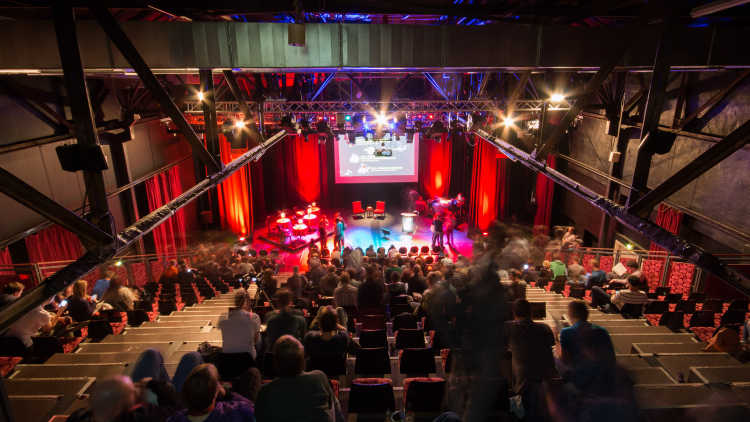Article
Beyond Tellerrand, Berlin 2014

It wasn’t the first time that Beyond Tellerand – a conference about web design, development and digital expertise – opened its doors in 2014: after the recurring event in Düsseldorf earlier this year, where Erik Spiekermann gave a talk, Marc Thiele and his conference finally landed in Berlin to bring people from the digital field together. For two days, Berlin’s Admiralspalast was packed with folks who shape the web: exchanging experiences, philosophies, best and worst practices, and listening to remarkable speakers and their ideas. Reasons enough for some Edenspiekermann colleagues to be in attendance, obviously.
The venue itself was nice and cozy; stuffed with a fairly young audience equipped with filter coffee and free muesli. The great thing about Beyond Tellerrand is its familiarity: nothing is precious here, everyone is friendly and really wants to learn something new. And this expectation should be met right in the first talk: Seb Lee-Delisle, an artist from the UK, uses lasers to program and build huge light shows, instruments and games. His advice for us: finish things, otherwise you won’t learn anything. Everyone agreed.
Learning through failure
Though that’s easier said than done: failure is a topic that seemingly cannot be tackled enough. Zoe Mickley Gillenwater managed to illustrate the failures she made in CSS development and, more importantly, how she learned from them. Reflecting on things and taking a step back was utterly present in almost every talk. We seem to get overwhelmed by our own tool sets; they change too quickly and we seem to lose touch with the core of what we’re building.
The mixture of design- and development-focused talks was quite well balanced: Jonathan Hoefler’s talk about micro-typography on the web weights out with Lisa Larson-Kelley’s presentation about real-time connections through browsers; Tim Kadlec’s observation on how we can bring more choreography to applications through animation was in perfect relation to the fact that “these applications have to be developed offline first”, as John Allsopp stated.
Make things tangible again
What I was enjoying most though were the occasional philosophic dropouts: talks that were primarily interesting, not necessarily educational (or: educational in a more abstract way). Andrew Clarke asked us how we can bring back the soul into our digital work (the answer seems so easy: disconnect from the technical, rational view. Make things tangible again). However: Making things tangible seems to be a big deal: Bringing digital achievements and solutions back into physical surroundings adds meaning to our lives. Brian Suda explained this in his talk on how he started to use digital tools (HTML, APIs, PDFs!) to print tactile things (city maps, diaries, calendars). Giving back a physical dimension to digital products can bring back their soul.
The “other” Ajax
And then there was James Hall, presenting a brilliant and dashing overview on how insecure and fragile our digital environments are. While all the technical details went by too fast to be absorbed by my mind, I really enjoyed his excitement about the bottle of all-purpose cleaner Ajax which he found in a department store (Ajax, “Asynchronous JavaScript and XML” – a programming concept – is mainly used to clean stuff in ordinary households around here).
As a highlight, Stefan Sagmeister, known for his incredible graphic design work and periodical sabbaticals, talked about his research on happiness. He also gave us a moment to reflect on our own state of happiness – while at the same time boosting it through a little chant with the audience:
Music in general played an important role at Beyond Tellerand: The DJ Tobi Lessnow recorded snippets of every talk and remixed them into individual songs that were played during the breaks. Also, he created the theme song; a terrific ear worm that will be stuck in your head forever once you hear it.
You can find most of the talks on the Beyond Tellerand vimeo channel, and visit the conference next year in Düsseldorf – it will be worth it!
Header image by Martin Kraft